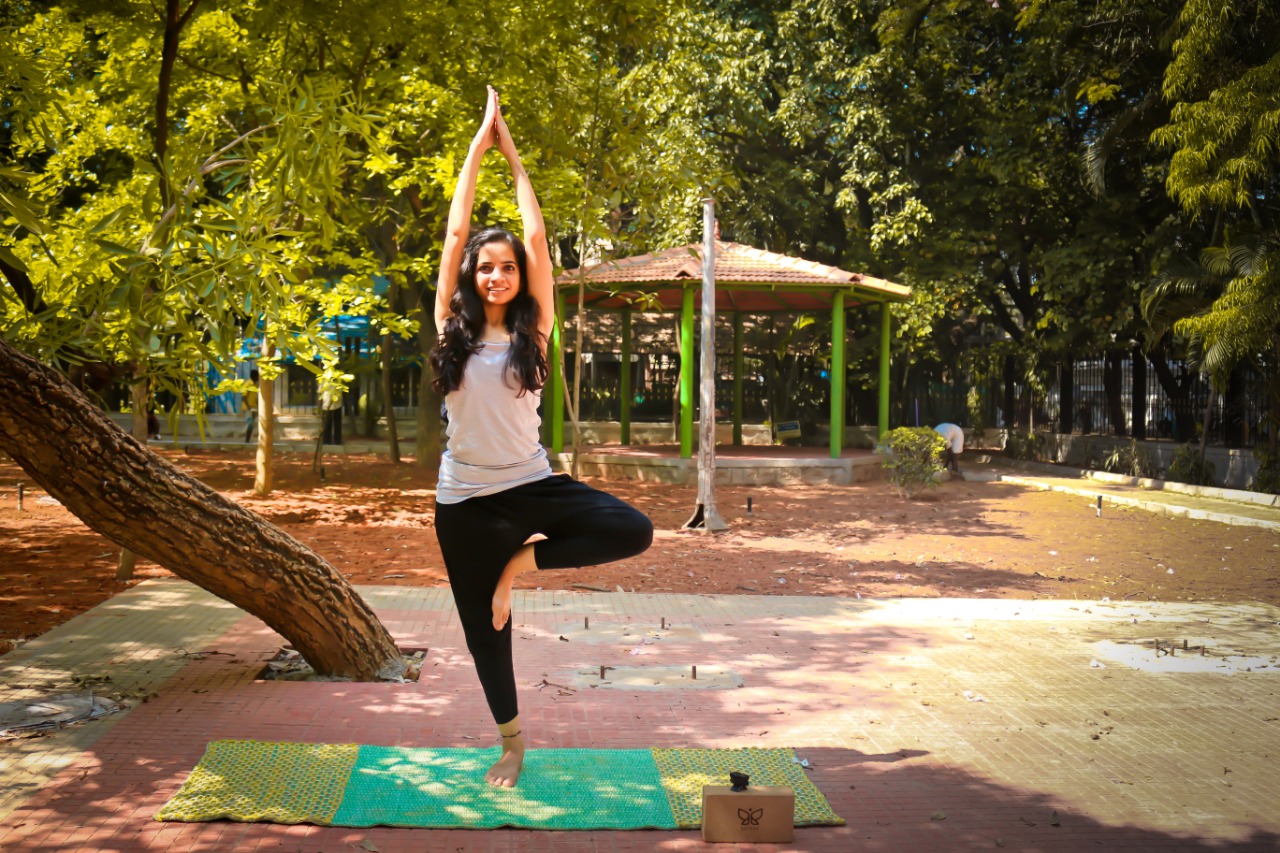Yoga, along with being a form of exercise is more of a spiritual technique to align your thought process. In today’s lives, we are always in a rush. Work, targets, household chores, examinations leave us with absolutely no time to focus on our physical and mental health.
That’s when yoga steps into the picture. Yoga, just like any other form, is an art that needs dedication, regular practice, and focus. This International Day of Yoga, a renowned abstract artist, philanthropist, and a dedicated yoga practitioner Krupa Shah is here to share some benefits of yoga with us. She religiously inculcates Yoga in her art and thoughts. Let us understand some Yoga postures and their benefits directly from her.
Yoga Postures And Their Benefits
NATARAJA ASANA:
Lord Nataraja, the Lord of dance is another name given to Lord Shiva.
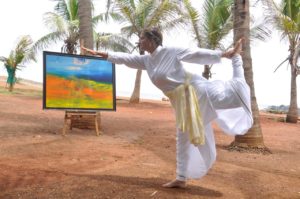
How to practice Nataraja Asana?
- Stand straight on your yoga mat and arms by your sides
- While inhaling bend your right leg backward and hold with your right ankle with a right hand as shown in fig
- Try to move your right leg upwards as much as you can
- Extend your left arm straight out in front. In the beginning, you can take the help of another person
- Hold this posture for 20 – 30 seconds and keep breathing normally. Now slowly come back to starting position
- Repeat this with the left leg then right leg. Like this, you can practice for 3-4 repetition
Benefits of Nataraja Asana:
- Improve body balance, blood circulation, posture, and digestion system
- Strengthens hip and thigh muscles, develops concentration
- Makes thighs, groins and abdominal muscles flexible
Precautions to be kept in mind while practicing Nataraja Asana:
- Those suffering from low blood pressure should not practice this asana
- During the beginning, use a wall or a friend as a support to gain proper posture
- Practice under the expert guidance
KAPOT ASANA:
Also known as the pigeon pose, is a complete and excessive body workout and enhances the flow of blood to your leg and hip areas.
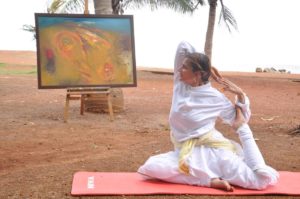
How to practice Kapot Asana?
- First, put down your Knee on the floor and your spine should be erect
- Now gently stretch your right leg in the backward direction (behind you)
- Keep extending your right leg until your left knee and foot are adjacent to the right hip
- Keep stretching your right leg until your left knee and foot are adjoining the right hip
- Make sure that your toes ought to be pointed
- After that, you have to lean forward and breathe in deeply
- Now push your midsection (chest) outwards
- Remain in the position about 20-25 seconds
- Now switch (change) your leg and repeat the same process with your opposite leg
- After that sit in Padmasana and rest for a while and repeat the process 4 times with your both legs
Benefits of Kapot Asana:
- Stretches and strengthens the joints and muscles in your legs
- Helps to reduce stiffness in the back and hips
- Balances the blood pressure and also reduces the effects of chronic diseases
- Releases stress and calm the mind and the body
Precautions to be kept in mind while practicing Kapot Asana:
- If you feel any pain in your shoulders or lumbar spine, make sure to back off immediately
- Focus on the posture and your breathing pattern to divert your attention from the discomfort
- Those with tight hips or thighs might not be able to do this asana easily. A small warm-up is highly recommended to make your body prepared.
- If you’re a beginner, it is advised to take a wall’s support to get the posture right
CHAKRASANA:
Chakrasana is a pose that symbolizes an upward bow pose that’s exceptionally constructive for flexibility of the spine. It resembles a half wheel or a bow aimed upwards. This is one of the most basic asanas and is regularly practiced by gymnasts and athletes.
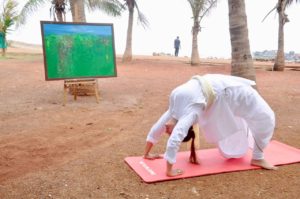
How to practice Chakrasana?
- Lie down on your back with feet apart, bend your knees and place your feet on the ground close to your body
- Now bring your palms under your shoulders such that the fingers point towards the shoulders and the elbows are shoulder-width apart
- Inhale and press your palms firmly into the floor
- Lift your shoulders and elbow firmly into the floor
- Your Feet should be pressed firmly into the floor
- Inhale and lift your hips up
- The spine should be rolled up so that it may seem to resemble a semi-circular arch or wheel
- Straighten out your arms and legs as much as possible so that the hips and chest may be pushed up
- Hold this pose for at least 15-30 seconds
- To go back to original, bend your elbows to lower your head and shoulders to the floor
- Then bend your knees and bring your spine and hips back to the ground and relax.
Benefits of Chakrasana:
- Strengthens liver, pancreas, kidneys, arms, spine, shoulders, hands, wrists, and legs
- Excellent for the heart
- Good for infertility, asthma, and osteoporosis
- Stretches the chest and lungs
- Stimulates the thyroid and pituitary glands.
- Increases energy and counteracts depression.
Precautions to be kept in mind while practicing Chakrasana:
- Those who suffer a back injury or asthma should not practice this asana
- For the beginners, do not go directly at a shot. Ask for a friend’s help
- Practice under an expert’s guidance
PARSVAKON ASANA:
For the body parts which are paid less attention to when it comes to flexibility and activity, this yoga asana works wonders. While practicing this, it is extremely essential to make sure that your bowels and stomach are empty. This asana works best when practiced in the morning.
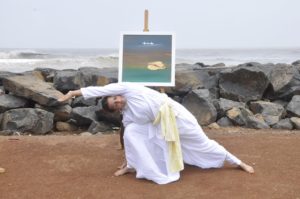
How to practice Parsvakon Asana?
- Stand on your mat such that you are facing the long side of the mat, and your feet are your legs’ distance apart. Make sure that your heels are in line with each other
- Your right foot needs to turn out such that your toes point towards the short edge of the mat, and your left toes are at a 45-degree angle
- Exhale and bend your right knee, making sure your thigh is parallel to the floor
- Your knee must be above the ankle and in line with the first two toes. The base of the big toe must be grounded onto the floor, but the thigh must be rolled out towards the little toes
- Inhale and firm up your lower belly, such that it is sucked in and pulled up
- Exhale and stretch your body over the right leg. Then, bring the right arm down. You could either place your elbow on your right thigh or place the hand on the floor, outside the right foot
- Extend your left arm to the ceiling, such that the palm is facing the front. Roll the outer upper left arm towards your face, and then reach over the head, ensuring your arm is next to the left ear
- Press the outside of the left foot on the floor, and then roll the right side of your buttock slightly under
- You must ensure that your spine and neck are long, and your neck is in line with your spine. Turn your gaze towards the left arm
- Revolve the ribcage up such that it faces the ceiling. Keeping the foundation stable, press your feet firmly. Keep your face soft and your spine light
- Hold the pose. To release, inhale, and come out of the pose assuming the Tadasana. Relax for a few seconds and repeat the pose on the other side
Benefits of Parsvakon Asana:
- Stretches and strengthens knees, ankles, and legs
- Abdominal organs are stimulated
- Helps increasing stamina
- Gives therapeutic relief from constipation, infertility, lower backaches, osteoporosis, sciatica, and menstrual discomfort
Precautions to be kept in mind while practicing Parsvakon Asana:
- Avoid this asana if you have Headache, High or low blood pressure, Insomnia
- In case you have a neck problem, do not look at the extended arm; look straight or down instead.
PADMASANA:
The lotus, or the Padma, is one of the most powerful symbols that is known to have transcended both religion and time. Over centuries, the lotus has been synonymous with detachment, rebirth, beauty, purity, spirituality, enlightenment, material wealth, and cosmic renewal.
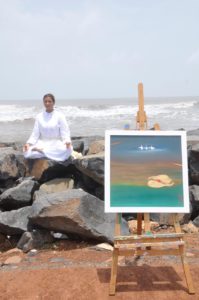
How to practice Padmasana?
- Sit on a flat surface on the ground with your spine erect and your legs stretched out.
- Gently bend the right knee, and use your hands to place it on your left thigh. Your soles must point upward, and the heels must be close to your abdomen.
- Do the same with the other leg. Now that both your legs are crossed, and your feet are comfortably placed on the opposite thighs, model your hands into a mudra of your choice and place it in position. Typically, the hands are placed on the knees.
- Remember that your head must be straight and the spine erects at all times.
- Breathe long and deep. Hold the position for a few minutes. Release.
- Repeat the pose with the other leg on top.
Benefits of Padmasana:
- Relaxes the mind and calms the brain
- Activates the spine, the pelvis, the abdomen, and the bladder.
- Menstrual issues are dealt with if this asana is practiced regularly
- This asana helps awaken the Chakras and also makes you more aware of things
- Your posture is sure to improve with the regular practice of Padmasana.
- Energy levels are restored with the practice of this asana.
Precautions to be kept in mind while practicing Padmasana:
- Avoid doing this asana if you have a knee or ankle injury.
- This asana must be practiced under the guidance of an experienced teacher, especially if you are an amateur to this pose. It might look simple, but it is not.
Yoga is a beautiful and peaceful form of art that calms your mind and increases your focus on the smallest of things. It gives your life a correct direction and helps you introspect yourself in the most difficult situations. Yoga is not just an exercise for the body, but art that soothes the mind and soul.

Krupa is a spiritual person and believes that yoga is not just a mere exercise, but a lifestyle which helps us align the chakras in our body. She also believes that yoga has helped her maintain her focus on her artistic skills and find optimism in every situation. This International Day of Yoga, let us inculcate yoga as a regular practice in our lives like Krupa and make our body healthier and minds happier.
Follow Krupa Shah on:
Instagram: https://www.instagram.com/krupashah.artist/
Facebook: https://www.facebook.com/krupashah.artist/
Got a guest post to share! Contact Us (WinningStree)

